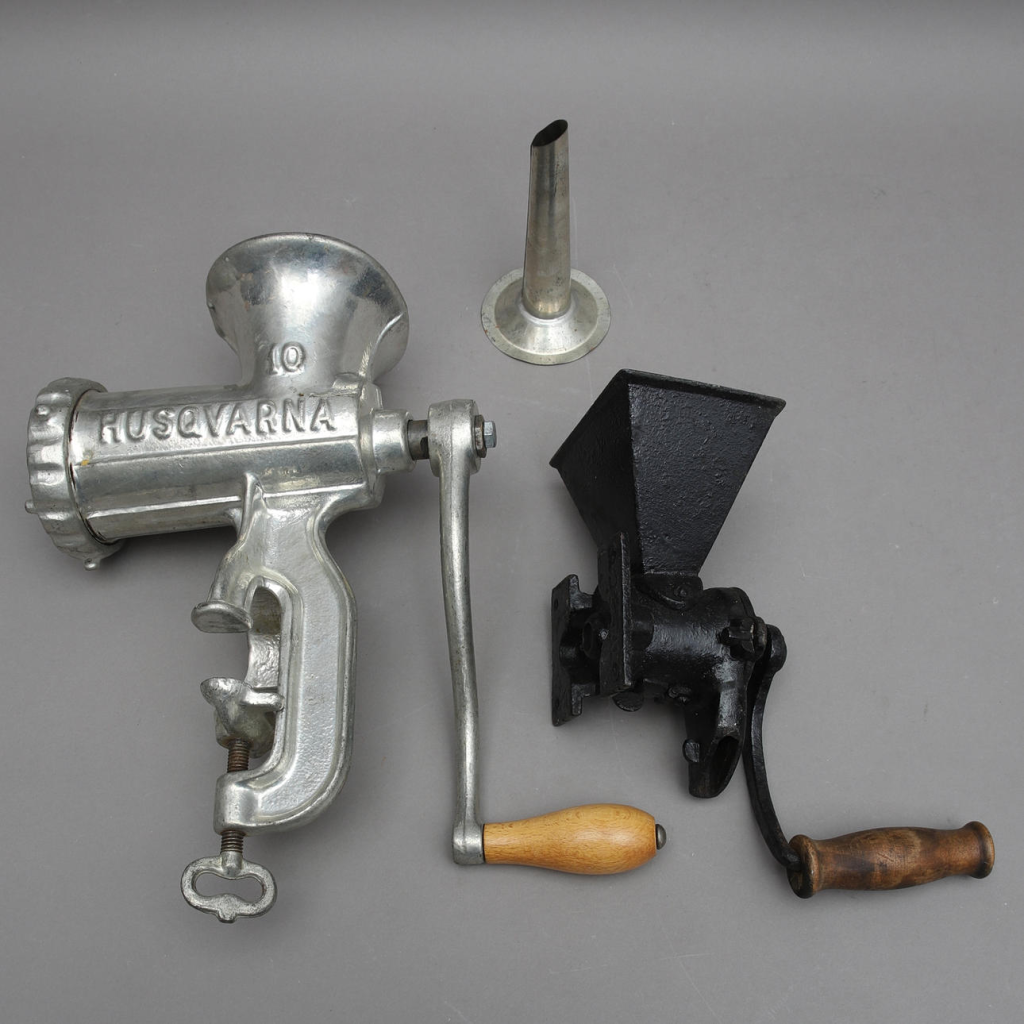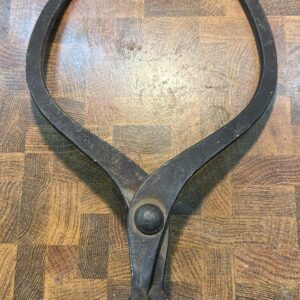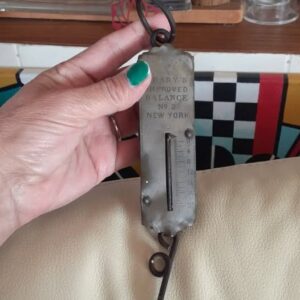In a world where modern kitchen gadgets dominate, it’s easy to forget the humble yet highly efficient tools of the past. One such classic is the vintage manual meat grinder—a practical and durable device that has been a staple in kitchens for generations. Recently, an image of a vintage Husqvarna manual meat grinder went viral, and many people found themselves captivated by its rustic charm and curious about its purpose.
In this article, we’ll explore the fascinating history, practical uses, and enduring appeal of manual meat grinders. Whether you’re a vintage collector, a culinary enthusiast, or someone intrigued by old-fashioned craftsmanship, you’ll appreciate the story behind this timeless tool.

What Is a Vintage Manual Meat Grinder?
A vintage manual meat grinder is a kitchen tool designed to grind meat manually. Unlike electric grinders, this hand-cranked device relies solely on human effort to operate. The model shown in the viral image features the well-known brand name Husqvarna, a Swedish manufacturer famous for crafting reliable and robust tools.
Typically made of cast iron, these grinders are built to last. They feature a clamp for secure attachment to a countertop, a hopper for feeding chunks of meat, and a crank handle—usually with a wooden grip—for easy turning. The grinder also has a blade and a perforated metal plate through which the ground meat emerges.
Video: Trying out the SPONG National 20 Meat Mincer (1950’s – 1960’s, Vintage!)
Why Are Vintage Meat Grinders Still Popular?
You might wonder why anyone would still use a manual meat grinder in the age of electric convenience. The answer lies in three key reasons: durability, control, and nostalgia.
- Unmatched Durability
Vintage manual grinders are known for their solid construction, typically made from cast iron or steel. Unlike modern plastic counterparts, these tools can withstand heavy use for decades. In fact, many grinders from the early 20th century are still fully functional today. - Better Control Over Meat Texture
When you grind meat manually, you have complete control over the texture and consistency. Electric grinders can sometimes over-process the meat, resulting in a mushy texture. With a manual grinder, you can maintain a coarser, more natural feel. - A Nostalgic Connection to the Past
For many people, using a vintage meat grinder evokes memories of family traditions, homemade sausages, and hearty meals prepared from scratch. It’s not just about practicality—it’s about preserving a slice of culinary history.
How to Use a Vintage Manual Meat Grinder

If you’ve stumbled upon an old grinder at a thrift shop or inherited one from a relative, you might be curious about how to use it. The process is surprisingly straightforward and rewarding.
- Clean the Grinder
Start by disassembling the parts and thoroughly washing each one. Since these grinders are often made of cast iron, make sure to dry them well to prevent rusting. - Secure the Grinder to a Countertop
Use the clamp at the bottom to fasten the grinder securely to your work surface. Make sure it doesn’t wobble when you start cranking. - Prepare the Meat
Cut the meat into small, manageable chunks. Slightly frozen meat works best as it’s easier to grind. - Feed the Meat
Place the meat chunks into the hopper at the top. Start turning the crank in a consistent, clockwise motion. - Collect the Ground Meat
As you turn the handle, the meat will be pushed through the blades and emerge from the perforated plate. Collect it in a bowl placed beneath the grinder. - Clean After Use
To maintain its longevity, clean and dry the grinder immediately after use. Lightly oil the parts before storing to prevent rust.
Creative Uses Beyond Meat Grinding

While these grinders are typically used for processing meat, their versatility extends beyond that. Here are a few creative ways to use your vintage grinder:
- Making Homemade Sausages
Attach a sausage stuffer and create your own flavorful links with custom seasonings. - Grinding Vegetables
Use it for coarse vegetable processing, like preparing minced onions or garlic for sauces. - Crafting Nut Butters
Grind roasted nuts into a coarse paste for homemade peanut or almond butter. - Processing Bread Crumbs
Turn stale bread into crumbs for use in meatloaf, stuffing, or breading.
Why Husqvarna Meat Grinders Stand Out
The Husqvarna brand has been synonymous with quality for over a century. Originally known for producing guns and sewing machines, Husqvarna later expanded into kitchen tools and outdoor equipment. Their manual meat grinders, like the one in the viral photo, are particularly prized for their robustness and classic design.
Collectors and culinary enthusiasts often seek out Husqvarna grinders for their reliability and iconic craftsmanship. Even today, finding one in good condition is considered a lucky score, as they blend functionality with antique charm.
Caring for Your Vintage Meat Grinder
Proper maintenance is crucial to preserving the life of your grinder. Here are some quick tips to keep it in top shape:
- Avoid Moisture: Cast iron can rust, so always dry the grinder completely after washing.
- Oil the Parts: A light coating of food-safe mineral oil can help prevent corrosion.
- Store in a Dry Place: Avoid leaving it in damp environments or places prone to humidity.
- Sharpen the Blades: Keep the cutting blades sharp to ensure efficient grinding.
Why Vintage Kitchen Tools Still Matter

In an era of disposable gadgets and appliances, vintage kitchen tools remind us of the value of craftsmanship and longevity. Unlike flimsy plastic devices that break within months, manual meat grinders can last for generations. They connect us to the past, to a time when meals were prepared with care and ingenuity.
Using a vintage grinder isn’t just about efficiency—it’s about the satisfaction of doing something manually, with skill and intention. Plus, there’s something deeply rewarding about creating delicious meals with a tool that has stood the test of time.
Final Thoughts: A Tribute to a Culinary Classic
The vintage Husqvarna meat grinder featured in the viral image is more than just an old kitchen tool—it’s a symbol of enduring quality and tradition. Whether you’re grinding meat, crafting sausages, or just appreciating its rugged beauty, this piece of culinary history has a story to tell.
So next time you come across one at a yard sale or in an old family kitchen, don’t dismiss it as just a rusty relic. Instead, give it a good clean, secure it to your countertop, and experience the simple, satisfying process of manual meat grinding. You might just find yourself falling in love with the old-fashioned way of doing things.





